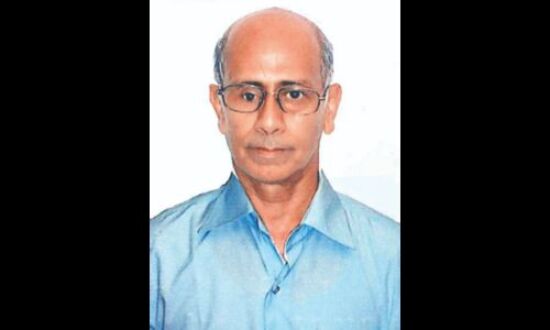Roots of farm distress
Richer Indian states have proven to be less efficient in providing farmers’ security – West Bengal being a stark example of agricultural success
BY Subrata Majumder18 April 2018 8:58 PM IST
Subrata Majumder19 April 2018 2:29 AM IST
Farmers' suicides are back in the limelight and have become a major strategic weapon for the political parties. Since 2010, farmer's suicides have been a perennial problem for the ruling parties. Even the biggest loan waiver by UPA-II in 2008 failed to prevent the incidents of suicide committed by desperate farmers.
Surprisingly, the rich states were more susceptible to farmers' suicides than the poorer states. In other words, agricultural distress was more prevalent in the rich states than in the poor states. A National Crime Record Bureau (NCRB) report revealed that Maharashtra – one of the richest states – recorded the highest number of farmers' suicides in 2014 and 2015. This was followed by Karnataka and Telangana – both rich states in terms of GDP and per capita income. Seven states, four of which are rich (Maharashtra, Karnataka, Telangana, and Tamil Nadu) accounted for 87.5 per cent of total farmers' suicide deaths in 2015, according to the NCRB report.
The poor states were relatively less prone to the problem. Notable among them were West Bengal and Bihar. In 2014 and 2015, both states did not record even a single instance of farmers' suicide, according to the report.
Analysts believe that the low rate of farmers suicide in Bihar is due to the migration of poor farmers to rich states like Punjab, Gujarat and others. In the case of West Bengal, despite the fact that the state's economy plummeted during the 34 years of communist rule, the land reforms, known as Barga Operation, is believed to have ensured that no farmers had to end their lives due to distress. Barga Operation is a system that provides legal protection to small and marginal farmers from the clutches of big farmers. This helped the farmers to be protected even from crop failures or debts.
Bargadar in Bengali means a sharecropper. Barga Operation was a land reform movement in rural West Bengal, which led to the amendment of the West Bengal Land Reform Act 1955 into a new law, namely Bengal Land Revenue Act 1979 and the Revenue Rules 1980. A sharecropper is a person who tills the land belonging to a third party and shares the proportion of crops with the landlord under an agreement. In most states, the agreements are verbal.
Sharecroppers or the tillers in West Bengal, registered under the new Act, have three important rights. First, they have perpetual rights to till the land. In other words, the sharecroppers and their descendants have the right to till the land forever. Second, the sharecroppers and their descendants cannot be evicted. Third, a landlord cannot sell the land without the consent of the sharecroppers and vice versa. In other words, the sharecroppers became the de-facto landowners, even though not on paper.
As a result, Barga Operation created a long-term bondage between the landowners and cultivators. Given the new law empowering sharecroppers with equivalent power, the sharecroppers or the tillers became eligible for agricultural subsidies and soft-loans from the banks. In other states, sharecroppers are largely not eligible for subsidies and soft loans, since they are not registered farmers, unlike in West Bengal.
The report of the NCRB reveals that it was mostly the small and marginal farmers that were prone to suicides. In 2015, over 70 per cent of farmer suicides were accounted for by small and marginal farmers. These farmers were either landless cultivators or had only a pittance of land. Most of these farmers cultivate the land of rich farmers as sharecroppers on a verbal term basis. As most of these farmers are landless and not registered, they are deprived of government subsidies and soft agricultural loans from banks.
To this end, the West Bengal Act of Barga Operation acted as a major saviour for the small and marginal farmers from being deprived of government subsidies and soft agricultural loan. In other states, most of the farm subsidies and soft loans for agriculture are availed by rich farmers. This is believed to be a primary reason for farmers' suicides. For example, some states provide free electricity. But, the benefits go to the big and rich farmers. Nevertheless, the farmers in West Bengal are largely protected by the land reform law. The benefits of government subsidies and soft-loans reach the real farmers through well-articulated panchayat systems and their overseeing BDO offices.
The operation paid rich dividends. West Bengal emerged as one the most successful states for the agrarian revolution in the country. Today, West Bengal is one of the largest producers of rice, the second largest producer of potato and the biggest producer of fruits and vegetables in the country. It is the fifth largest producer of agriculture products.
Farmers suicide is a global phenomenon and the risk is not restricted to India. In France, a farmer's suicide is supposed to occur every two days. Australia reports one farmer suicide after every four days. In USA, the rate of farmer's suicide is higher than any other profession, according to a study by the Centre for Disease Control and Prevention.
Nevertheless, the reasons attributed to the farmer's suicides in developed nations are different from those in India. The volatility of prices, erupting from demand-supply imbalances and the intervention of speculators or intermediaries are the major causes for farmers' suicides in these countries.
(The views expressed are strictly personal)
Next Story



